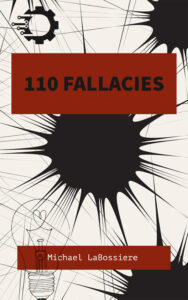 Description:
Description:
This fallacy occurs when someone uncritically rejects a prediction or the effectiveness of the responses to it when the predicted outcome does not occur:
Premise 1: Prediction P predicted outcome X if response R is not taken.
Premise 2: Response R was taken (based on prediction P).
Premise 3: X did not happen, so Prediction P was wrong.
Conclusion: Response R should not have been taken (or there is no longer a need to take Response R).
The error occurs because of a failure to consider the obvious: if there is an effective response to a predicted outcome, then the prediction will appear to be “wrong” because the predicted outcome will not occur.
While a prediction that turns out to be “wrong” is technically wrong, the error here is to uncritically conclude that this proves the response was not needed (or there is no longer any need to keep responding). The initial prediction assumes there will not be a response and is usually made to argue for responding. If the response is effective, then the predicted outcome will not occur, which is the point of responding. To reason that the “failure” of the prediction shows that the response was mistaken or no longer needed is thus a mistake in reasoning.
To use a silly analogy, imagine that we are in a car and driving towards a cliff. You make the prediction that if we keep going, we will go off the cliff and die. So, I turn the wheel and avoid the cliff. If backseat Billy gets angry and says that there was no reason to turn the wheel or that I should turn it back because we did not die in a fiery explosion, Billy is falling for this fallacy. After all, if we did not turn, then we would have probably died. And if we turn back too soon, then we will probably die. The point of turning is so that the predicted outcome of death will not occur.
A variation on this fallacy involves inferring the prediction was bad because it turned out to be “wrong”:
Premise 1: Prediction P predicted outcome X if response R is not taken.
Premise 2: Response R was taken based on prediction P.
Premise 3: X did not happen.
Conclusion: Prediction P was wrong about X occurring if response R was not taken.
While the prediction would be “wrong” in that the predicted outcome did not occur, this does not disprove the prediction that X would occur without the response. Going back to the car example, the prediction that we would die if we drove of the cliff if we do not turn is not disproven if we turn and then do not die. In fact, that is the result we want.
Since it lacks logical force, this fallacy gains its power from psychological force. Sorting out why something did not happen can be difficult and it is easier to go along with biases, preconceptions, and ideology than it is to sort out a complicated matter.
This fallacy can be committed in good faith out of ignorance. When committed in bad faith, the person using it is aware of the fallacy. The intent is often to use this fallacy to argue against continuing the response or as a bad faith attack on those who implemented or argued for the response. For example, someone might argue in bad faith that a tax cut was not needed to avoid a recession because the predicted recession did not occur after the tax cut. While the tax cut might have not been a factor, simply asserting that they were not needed because the recession did not occur would commit this fallacy.
Defense: To avoid inflicting this fallacy on yourself or falling for it, the main defense is to keep in mind that a prediction based on the assumption that a response will not be taken can turn out to be “wrong” if that response is taken. Also, you should remember that the failure of a predicted event to occur after a response is made to prevent it would count as some evidence that the response was effective rather than as proof it was not needed. But care should be taken to avoid uncritically inferring that the response was needed or effective because the predicted event did not occur.
Example #1
Julie: “The doctor said that my blood pressure would keep going up unless I improved my diet and started exercising.”
Kendra: “How is your blood pressure now?”
Julie: “Pretty good. I guess I don’t need to keep eating all those vegetables and I can stop going on those walks.”
Kendra: “Why?”
Julie: “Well, she was wrong. My blood pressure did not go up.”
Example #2
Robert: “While minority voters might have needed some protection long ago, I am confident we can remove all those outdated safeguards.”
Kelly: “Why? Aren’t they still needed? Aren’t they what is keeping some states from returning to the days of Jim Crow?”
Robert: “Certainly not. People predicted that would happen, but it didn’t. So, we obviously no longer need those protections in place.”
Kelly: “But, again, aren’t these protections what is keeping that from happening?”
Robert: “Nonsense. Everything will be fine.”
Example #3
Lulu: “I am so mad. We did all this quarantining, masking, shutting down, social distance and other dumb thing for so long and it is obvious we did not need to.”
Paula: “I didn’t like any of that either, but the health professionals say it saved a lot of lives.”
Lulu: “Yeah, those health professionals said that millions of people would die if we didn’t do all that stupid stuff. But look, we didn’t have millions die. So, all that was just a waste.”
Paula: “Maybe doing all that was why more people didn’t die.”
Lulu: “That is what they want you to think.”
